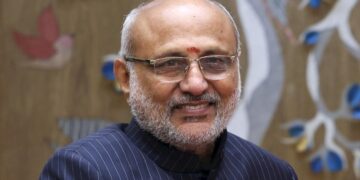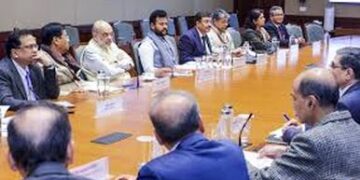New Delhi: Finance Minister Nirmala Sitharaman in the Budget for financial year 2025-26, needs to focus on capital expenditure and infrastructure spending to boost economic growth and make it more sustainable, RBI Monetary Policy Committee member Nagesh Kumar said on Sunday.
The eminent economist noted that sustaining infrastructure expenditure and building it further would be very helpful for creating a much more robust trajectory of economic growth for India.
“In the context of the slight economic slowdown that we observed in the second quarter, and overall, there is a need to boost growth and make it more robust, more sustainable.
“The finance minister would do well to continue this momentum (in Budget 2025-26), which she herself started two years ago, of putting great emphasis on capex, infrastructure spending and increasing it to very healthy levels,” he said in an interview to PTI Videos.
The Union Budget for 2025-26, set to be presented by Sitharaman on February 1, arrives amidst global economic uncertainties and moderating domestic growth.
“Because after suffering from the COVID pandemic, the Indian economy suffered a lot, after that it showed a robust recovery, but this pent up demand which drove the Indian economic growth for the past few years, is now coming to an end.
“And so then the Indian economy is back to the trajectory which was there in pre-COVID times, and it now needs to be given a little bit of a boost to public spending,” he said.
Sitharaman in her last year’s budget had said that the government will provide Rs 11.11 lakh crore for capital expenditure for 2024-25 and introduce viability gap funding to spur private investment in infrastructure.
India’s second quarter (July-September) GDP growth has slumped to a seven-quarter low of 5.4 per cent.
Responding to a question on weakening of rupee, Kumar said it is more than rupee depreciation, it is the strengthening of the dollar.
According to him, all different currencies are weakening vis-a-vis dollar, because the dollar is becoming very strong, and that is largely due to the strong performance of the American economy and the expectation that the new administration led by Donald Trump will do something to strengthen the US economy.
“So this weakness of the rupee is largely the strengthening of the dollar and which is also leading to the outflows of FII positions from India. So when there is too much demand for dollars, the rupee tends to depreciate,” Kumar observed.
He said the fact that other currencies are also depreciating, one has to take a relative look.
“My feeling is that rupee is still in real terms a bit appreciated and overvalued,” Kumar said, adding that managing rupee at a more competitive exchange rate, which is not overvalued, is healthy for exports, for India’s manufacturing efforts.
The rupee is currently hovering around 86.60 against the greenback. It had also touched an all-time closing low of 86.70 on January 13.
Replying to a question on resurgence of giveaways, also called freebies, Kumar said it is a concern for long-term development.
“Because the resources which could have been used for development purposes, for building infrastructure, for closing the gaps in the infrastructure that exist in the lagging regions or different states are promised to be given as handouts.
“It is not a very healthy trend, and should be curbed, because people should be aware of where the money will come from,” he said.
Emphasising that there is a need to make voters aware that resources which are promised to them are not really freebies, Kumar said freebies cost the public in other forms in terms of development.
“Do you want long-term development prospects of your state or your constituency, or do you want a short-term gain in the form of a freebie?,” he questioned.
“…I hope people will realize sooner than later that this is a false promise of giving freebies, because ultimately it hurts them more than anybody,” he said.




